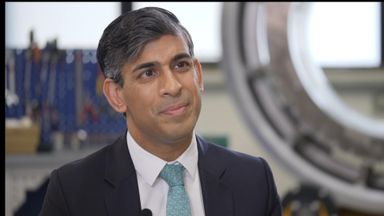Would you like Victoria to rate your portfolio? Email money@telegraph.co.uk with the subject line: “Rate my portfolio”. Please include a breakdown of your portfolio, your age and what your investing goals are. Full names will not be published.
Dear Victoria,
I would like to retire at 67 with a comfortable return for my wife and I.
I’m 53 and earn £110,000 a year. My Scottish Widows fund is worth £240,000 split evenly in two funds.
- Scottish Widows JP Morgan Natural Resources: £120,000
- Scottish Widows Fidelity American: £120,000
Around £1,600 goes into my workplace pension every month. My wife and I will both qualify for the full state pension.
Regards,
Jason
Dear Jason,
It’s great to see you’ve amassed a healthy pension pot already, plus your earnings are considerably above average, allowing you to save as much as possible in the build up to retirement.
Taking your initial sum of £240,000, adding your monthly pension contributions of £1,600 and assuming a 2pc inflationary rise to those contributions and a 5pc annual return on your investments over the next 14 years, you should hopefully be left with a pension pot of around £920,000 when you retire at 67 for you and your wife. Plus, you’ll both be eligible for the full state pension to top that up.
So I’d say there’s lots to be positive about and you’re well on track for a comfortable pension, given that trade body the Pensions and Lifetime Savings Association (PLSA) estimates you need around a £365,000 pension to fund a “comfortable” retirement per couple. That figure is expected to climb to around £482,000 by the time you finish working, assuming an annual inflation rate of 2pc but even after that, you’re still in a strong position.
A couple of things to bear in mind – firstly, as I’m sure you know, 25pc of your total pension pot will be tax-free – but you will still have to pay income tax on the rest and there’s a chance the tax thresholds will be higher by 2038.
Secondly, inflation means that £920,000 would be worth a lot less than in today’s money. Again, assuming a 2pc annual inflation rate between now and 2038, potentially it will be closer to £700,000.
Digging into your portfolio next, analysing your fund holdings won’t take long since you’ve only got two!
Your SW JPM Natural Resources fund has served you very well and has been a top quartile performer over a one-, three-, and five-year period. The fund has benefitted from the commodity bull market, fuelled by the war in Ukraine which sent energy prices soaring.
While SW Fidelity American has enjoyed strong gains thanks to the outperformance of US stocks, particularly in the tech sector in recent years, the fund hasn’t actually done as well as others, landing it with a bottom quartile position over one, three and five years.
However, regardless of how your funds have performed, a lack of diversification is your main problem to solve. The glaring issue here is that you’ve got all your eggs in just two baskets. Fourteen years is a very long time and there’s no guarantees that the US and/or commodities will continue to outperform across that time frame.
That’s why it’s essential when investing to diversify across a range of geographies and asset classes if you can, to protect your wealth from being overly exposed to a major correction within one or multiple pockets of the market. And yes, this may come at the expense of short-term returns, but as your pension years draw closer, you’ll want to focus more on wealth preservation and less on piling on the risk.
I think it is time to go back to the drawing board.
While there’s no magic number of funds to aim for, I would suggest somewhere around six to 10 for the amount of funds you have in your pension portfolio.
When building a portfolio there are various approaches, but a common one I’ve discussed in this column before that I find helpful is the core and satellite approach. The “core” portion should make up the bulk of a portfolio (around 70pc) and include funds that can deliver steady growth in a range of market conditions.
Every investor will have different requirements but, in general, core holdings will have certain characteristics – they are funds you can buy and forget about, they are typically less volatile, and they should ideally be low-cost and diversified.
Passive funds that track well-known stock market indices – such as the MSCI World, S&P 500 and FTSE All Share – are all examples of popular core holdings. Your holding, Scottish Widows Fidelity American, which invests in some of the biggest US companies like Microsoft, Amazon, and Alphabet, fits into the core category.
The satellite part of the portfolio – accounting for around 30pc – is where you have exposure to investments that are slightly riskier, but have the potential to generate larger profits for investors. Your JPM Natural Resources Fund would slot in here due to its focus on commodities. Among others, you could consider adventurous funds that invest in smaller companies or higher growth, higher risk regions such as emerging markets.
Also think about adding more asset class diversification.
Currently you have no exposure to bonds, which in my view needs addressing given you are in your early 50s – you’ll want to reduce your exposure to higher risk equities as retirement approaches.
A very simple rule of thumb is to take 100 minus your age to give you a guide to what percentage of your portfolio should be in equities. So, you might want to look at a roughly 50-50 split between stocks and bonds.
A popular bond choice with our customers at the moment is Royal London Short Term Money Market, which yields 5.2pc. While all investments carry risk, this fund is offering a generous return with very low risk.
Money market funds own a diversified basket of conservative bonds that are due to mature soon, normally within a year, meaning that investors can earn an income on their cash with minimal risk. Other bond funds to consider looking into are flexible bond funds Jupiter Strategic Bond and M&G Global Macro Bond, both are among our favourites.
You’ve got almost a decade and a half of working life left that will be critical in terms of growing your investment pot and best preparing yourself financially for retirement.
A common mistake many investors make is treating funds like sweets and buying too many of them, but you are at the opposite end of the spectrum so why not consider building a healthy, diversified, and manageable portfolio which should give you a better chance of success by the time your working life winds up. Best of luck.
Victoria is head of investment at Interactive Investor. Her columns should not be taken as advice or as a personal recommendation, but as a starting point for readers to undertake their own further research.
Disclaimer: The copyright of this article belongs to the original author. Reposting this article is solely for the purpose of information dissemination and does not constitute any investment advice. If there is any infringement, please contact us immediately. We will make corrections or deletions as necessary. Thank you.



